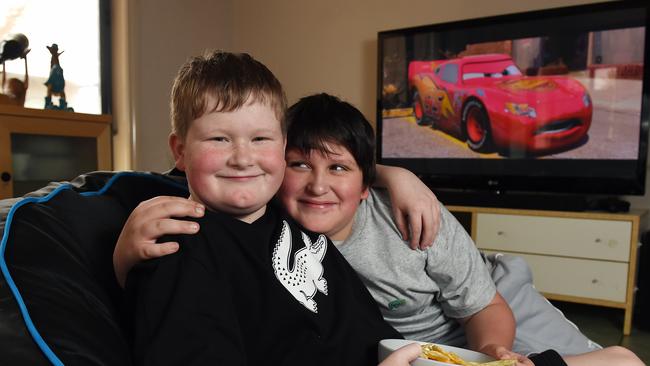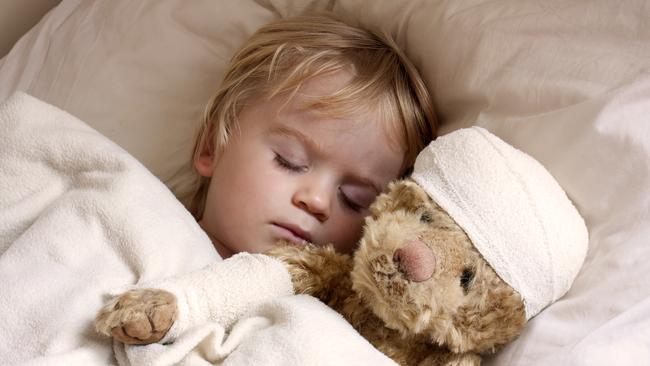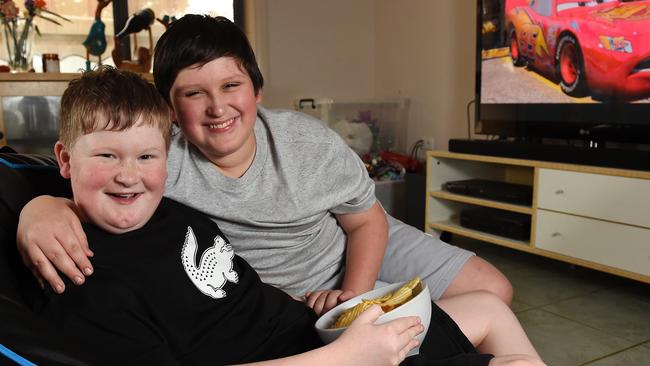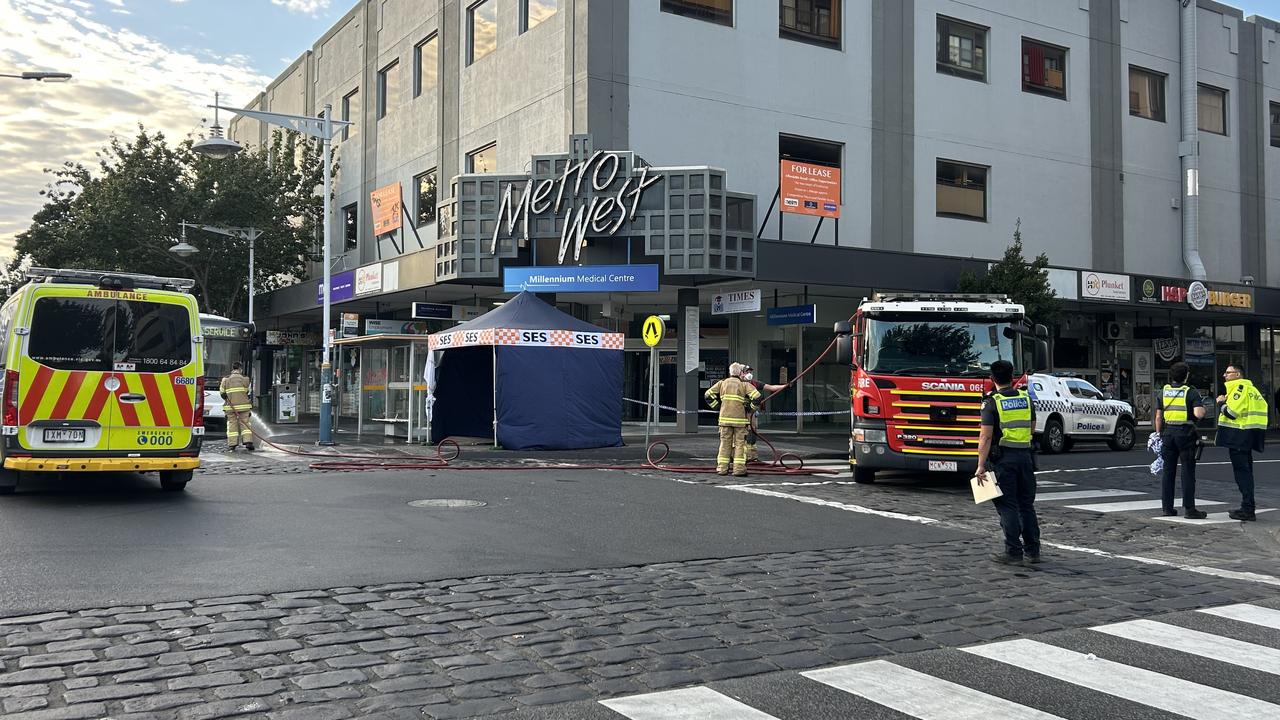Murdoch Children’s Research Institute heart guidelines for kids’ cancer treatment
Childhood cancer survivors are 15 times more likely to have heart failure than the general population – but a major breakthrough gives new hope.

News
Don't miss out on the headlines from News. Followed categories will be added to My News.
The first international clinical guidelines to help protect the hearts of children during cancer treatment have been developed by a Melbourne-led team.
The major breakthrough is in response, say experts, to the success of new cancer drugs that have also increased the chances of cardiac side effects while they are receiving treatment in children.
Childhood cancer survivors are 15 times more likely to have heart failure and eight times more likely to have heart disease than the general population.
The research was led by paediatric oncologist Rachel Conyers at the Murdoch Children’s Research Institute (MCRI) and two of her senior team members, Dr Claudia Toro and Ben Felmingham.
Associate Professor Conyers says the guidelines, for use when children are receiving treatment, will become an indispensable tool for clinicians and significantly reduce the harmful impact of cancer therapies.
She says children at risk of heart complications are those who have high doses of chemotherapy that can cause high toxicity, patients having chest radiation and those on any of the new molecular inhibitors or receiving immunotherapy.

“The impetus of developing the guidelines was playing catch up such that our practices reflect what surveillance is necessary for these new therapies and create the evidence around heart toxicities using new therapies,” Associate Professor Conyers said.
“There are lots of new personalised therapies, but there was no information or guideline that pulled of all those medications together and gave one guidance around cardiac toxicity, risk stratification and how to work-up or follow up patients.
“With the new therapies, the guidelines help treating health care workers know what toxicity the patients are at risk of, how to screen for these toxities and when they need to be referred to a specialist.”
Associate Professor Conyers says it is a major advance for the cardio-oncology field.
“Before this there was no defined approach for surveillance or follow up of paediatric patients during treatment despite new therapeutics having early heart complications such as high blood pressure, abnormal heart beats and heart failure,” she said.
Associate Professor Conyers said recent advances in cancer treatment for children have resulted in survival rates of more than 80 per cent.
“However, improving serious health outcomes in survivors remains an important and essential focus and prevention is key,” she said.
“Heart complications are a leading cause of death for childhood cancer survivors, second only to cancer relapse. Modern treatments including precision medicine have broadened the agents that can cause heart problems in the short-term.”
Associate Professor Conyers said there was a hole in the literature as previous guidelines were developed for adults, not children.
She said the guidelines, now in use in Australia, created a framework for how clinicians look at heart health going forward in modern era cancer therapies.
In developing the new guidelines, she said the team studied all types of children’s cancers with a focus on patients who had receive chemotherapy, radiotherapy and the new molecular or immune therapies and cover cardiovascular disease assessment, screening and follow-up for children.
The results were endorsed by the Australian and New Zealand Children’s Oncology Group led by Associate Professor Conyers and have been published in the Journal of the American College of Cardiology. Key major funders for the important work include the Heart Foundation and Kids Cancer Project.
Lifesaving drug a heartbreaker

When he was five James Bloor loved nothing more than to be outside, running around and playing: an energetic child on the cusp of life.
Then he was diagnosed with Burkitt’s lymphoma, an aggressive and fast-growing cancer that, although very treatable, needed strong chemotherapy drugs to overcome.
The diagnosis turned his Hoppers Crossing family’s world upside down.
Mum Toni Bloor said the tumour had filled every space inside her young son’s head. By the time he was diagnosed, she said he had just millimetres of airway clear.
Mrs Bloor said their world stopped, but that they were supported by loving family and friends. James, now 13, successfully had seven months of intensive cancer treatment but sadly cancer wasn’t going to be his only serious health problem.
The chemotherapy treatment that helped to save his life had also caused serious side effects to his heart.
“It happened with the very first dose of the chemotherapy drug,” Mrs Bloor said.
James was diagnosed five years later with cardiomyopathy (heart muscle disease) and will now need heart medication for life.
“Would I change anything? Not a thing,” Mrs Bloor said. “Yes, James now has a heart condition, but at least we have him.
“It is amazing that they have now developed these guidelines so that they can catch any problems earlier and treat them.”
Next week James starts Year 8 and with his 11-year-old brother Braydan loves nothing more than sitting back to watch a good movie.
“He is a real movie buff,” Mrs Bloor said.
She said James had the lifesaving and essential chemotherapy drug twice to treat his cancer.
“I was not going to say to no to treatment, we had no choice,” Mrs Bloor said.
“For us everything changed in a heartbeat, but James is managing. We have had miracles before, and we keep praying for another.”
KEY FACTS
• Around 1000 children are diagnosed with cancer ever year in Australia
• In Victoria 220 to 270 children are diagnosed, 70 per cent will be exposed to radiation/ chemotherapy or new therapy
• New treatment have resulted in survival rates of more than 80 per cent



